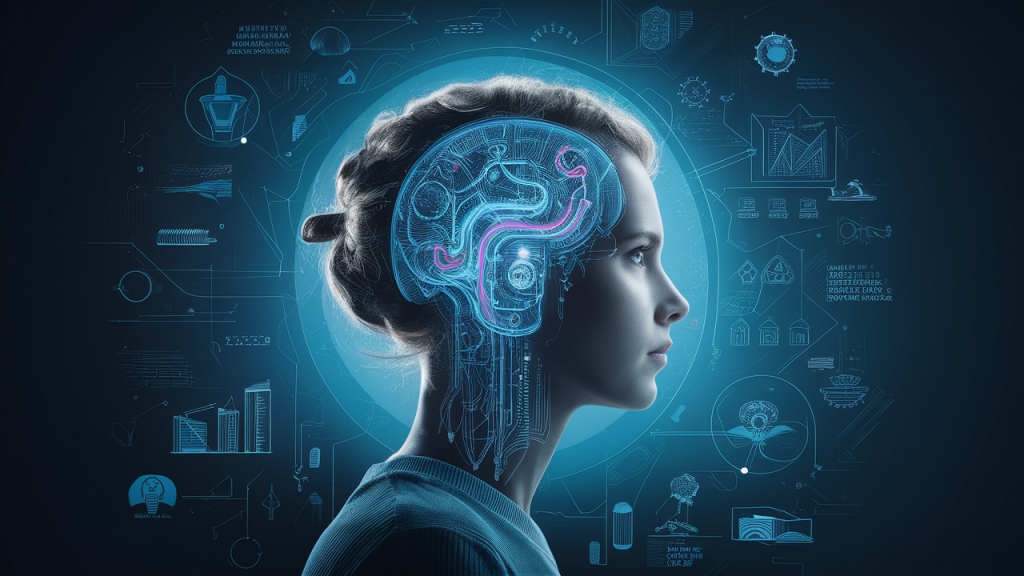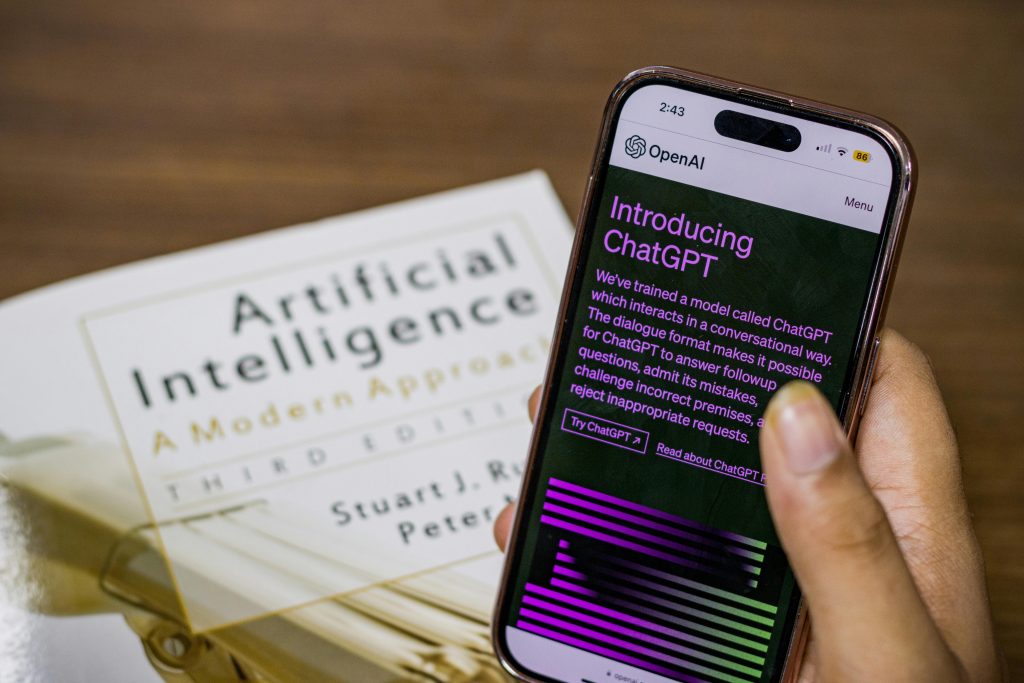Employing Generative AI in education can enhance learning outcomes, strengthen teacher performance and wellness, and foster equity in educational practices. Conversely, lacking such oversight, there exists the potential for privacy violations, inconsistent disciplinary procedures, and inefficient application of AI technologies in educational settings.
What is Generative AI?
Generative AI refers to a subset of artificial intelligence technologies that can generate new content, ranging from text and images to music and code, based on the patterns and information it has learned from training data. This technology utilizes advanced machine learning models and algorithms, particularly those based on neural networks such as Generative Adversarial Networks (GANs) and transformer models like OpenAI’s GPT (Generative Pre-trained Transformer) series.

How Generative AI Enhances Learning
- Personalized Learning Materials: Generative AI can create customized learning materials that adapt to the proficiency level and learning style of individual students. For example, it can generate practice questions tailored to a student’s specific weaknesses or produce explanatory paragraphs in different styles and complexities.
- Automated Content Creation: Teachers and educational content creators can use generative AI to produce written content, educational videos, or even create virtual reality environments for immersive learning experiences. This can significantly reduce the time and effort required to develop new teaching resources.
- Language Learning: AI-driven language learning tools can generate realistic and contextually relevant conversations for practice. For example, a generative AI model could simulate conversations in a foreign language, allowing students to practice speaking and listening in a variety of scenarios.
- Simulation and Modeling: In subjects like science and engineering, generative AI can create detailed simulations or models that help students visualize complex processes or experiments that would be too costly or dangerous to conduct in a real-world setting.
- Feedback and Assessment: Generative AI can be used to provide students with detailed feedback on their work, generating explanations and suggestions for improvement. It can also assist in grading by generating performance summaries based on the students’ submissions.
Challenges and Ethical Considerations of Using Generative AI in Education

- Plagiarism and Academic Dishonesty: There is a risk that students may rely heavily on AI-generated content for their assignments, leading to increased instances of plagiarism and a reduction in genuine student effort and learning.
- Diminished Student and Teacher Agency and Accountability: The use of AI can potentially reduce the involvement and decision-making roles of teachers and students in the educational process, leading to less personal engagement and accountability in learning and teaching.
- Compromised Student Privacy and Unauthorized Data Collection: AI systems often require large amounts of data to function effectively, which can lead to concerns over the privacy of students’ personal information and the potential for unauthorized data collection and usage.
- Overreliance and Loss of Critical Thinking: Dependence on AI for educational tasks can lead to a decrease in critical thinking and problem-solving skills among students as they may become overly reliant on technology for answers.
- Societal Bias and Lack of Cultural Sensitivity: AI systems can inadvertently perpetuate existing societal biases if they are not carefully designed. They may also lack the cultural sensitivity required to effectively teach students from diverse backgrounds.
7 Strategies for Responsibly Using Generative AI in Education
Here are seven Strategic guidelines that educators, policymakers, and educational leaders should consider when establishing protocols to ensure the responsible and effective implementation of AI in education.

- Purpose: Align AI with Educational Objectives – AI should be used intentionally to enhance and enrich the learning environment, foster the well-being of students and staff, and improve administrative operations. It should aim to assist all students in meeting educational objectives, with an emphasis on equity, inclusivity, and narrowing the digital divide. AI technologies must be in harmony with the collective educational vision, accommodating various learning styles and backgrounds.
- Compliance: Ensuring Adherence to Established Policies – The integration of AI into education must adhere to critical aspects of technology policy, such as privacy, data security, student safety, and data ownership. Aligning AI applications with established regulations and ethical guidelines is crucial, especially concerning the protection of student privacy and the security of their data.
- Knowledge: Promote AI Literacy – AI literacy encompasses grasping the functionality of AI, its constraints, implications, and ethical issues. It is vital to provide individuals with the necessary knowledge and skills to interact responsibly with AI technologies. This includes aspects of computer science, ethics, psychology, data science, and beyond. An example of this is Article 26 of Argentina’s Framework for the Regulation of the Development and Use of AI , which states: “AI training and education will be promoted for professionals, researchers, and students, in order to develop the skills and competencies necessary to understand, use and develop AI systems in an ethical and responsible manner.
- Balance: Enjoy AI’s Good Parts and Fix the Bad Parts – While AI has many possible advantages for education, it’s important to recognize and reduce its risks. Education systems should offer advice on how to use AI carefully, making sure it helps achieve community goals such as bettering student and teacher well-being and learning results. In April 2023, the United Arab Emirates Office of AI, Digital Economy and Remote Work released 100 Practical Applications and Use Cases of Generative AI, a guide that includes detailed use cases for students, such as outlining an essay and simplifying difficult concepts.
- Integrity: Promote Honest Learning – AI offers both challenges and benefits when it comes to being honest and fair in school. It’s crucial to manage the risk of plagiarism while using AI to support values like honesty, trust, fairness, respect, and responsibility. AI tools can help check information, but it’s important to understand their limits and value work that is truly original. Teachers should make clear rules about when and how students can use AI for their homework. Here are three levels of AI usage that should vary based on the assignment:
- Permissive: Students can freely use AI tools to help with their homework, like coming up with ideas, checking grammar, or organizing their work.
- Moderate: Students can use AI tools for certain parts of their homework, like brainstorming or initial research, but the main content and conclusions should be their own work.
- Restrictive: AI tools are not allowed for the assignment, and everything submitted must be the student’s own original work.
- Agency: Keep People in Charge of Decisions – Any decisions supported by AI should include a way for humans to intervene and must depend on human approval. AI should act as an advisor, enhancing but not taking over the roles of educators and administrators. Peninsula School District, Washington, laid out its AI Principles and Beliefs Statement: “The promise of Artificial Intelligence (AI) in the Peninsula School District is substantial, not in substituting human instructors but by augmenting and streamlining their endeavors. Our perspective on AI in education is comparable to using a GPS: it serves as a supportive guide while still leaving ultimate control with the user, whether the educator or the student.
- Evaluation: Regularly Review AI’s Effects – It’s important to frequently evaluate and revise AI guidelines to make sure they keep up with the changing requirements of the educational community and adhere to updates in laws and technology. Gathering insights from different groups like teachers, parents, and students is essential for ongoing enhancement.
These seven Strategies offer a structure for the responsible and effective use of AI in education. By following these guidelines, educators and policymakers can take advantage of AI’s benefits while tackling its challenges, ensuring an approach that is balanced, ethical, and inclusive.

Conclusion
As we navigate the evolving landscape of education technology, it’s clear that AI holds transformative potential for enhancing learning environments, personalizing educational experiences, and streamlining administrative tasks. However, the integration of AI into education comes with its own set of challenges and ethical considerations, particularly regarding data privacy, equity, and the preservation of human oversight. By adhering to the strategic guidelines outlined in this blog, educators and policymakers can ensure that AI is used responsibly and effectively. As AI technologies continue to develop, it will be crucial to remain vigilant and adaptable, continuously assessing their impact and refining their use to serve the best interests of all students. Embracing AI in education is not just about leveraging new tools, but about fostering an inclusive, equitable, and enriched learning landscape for future generations.



